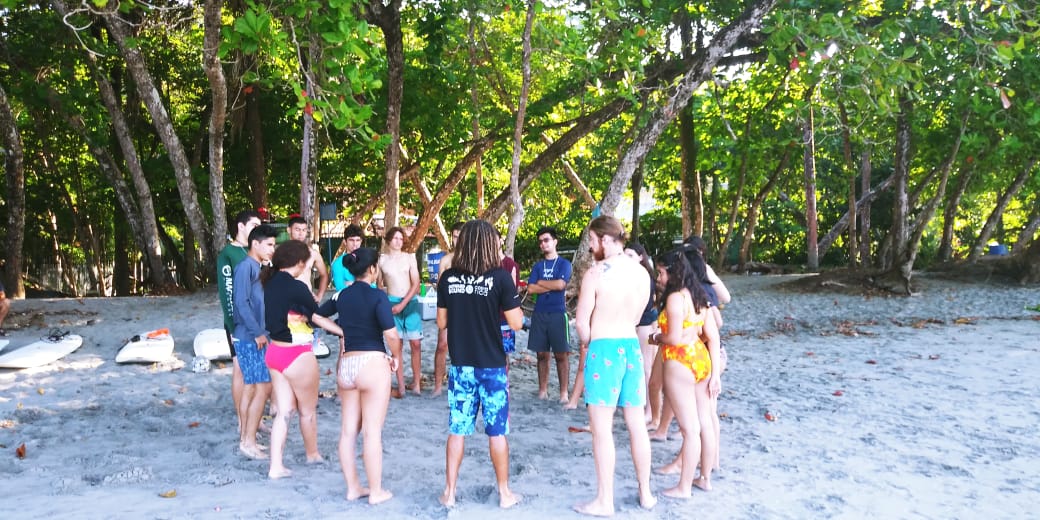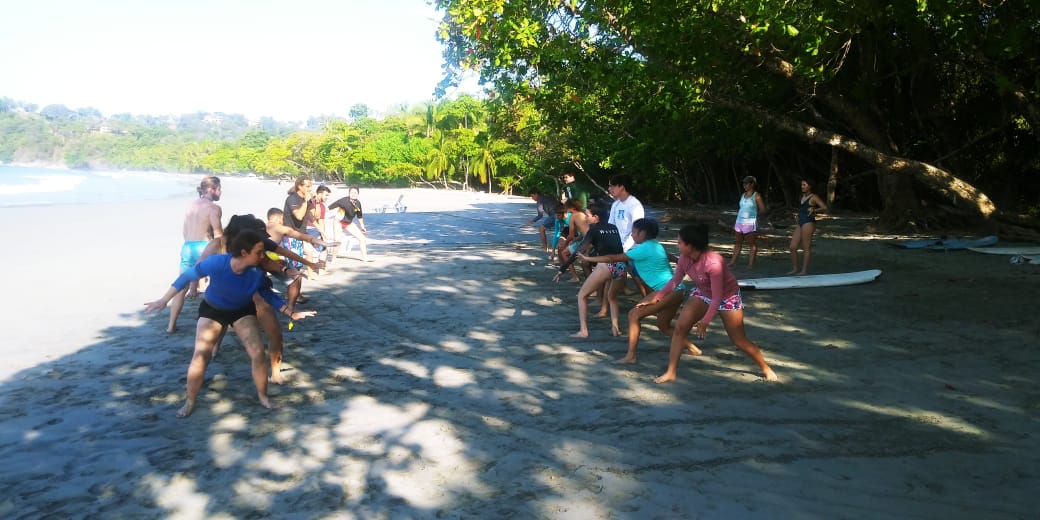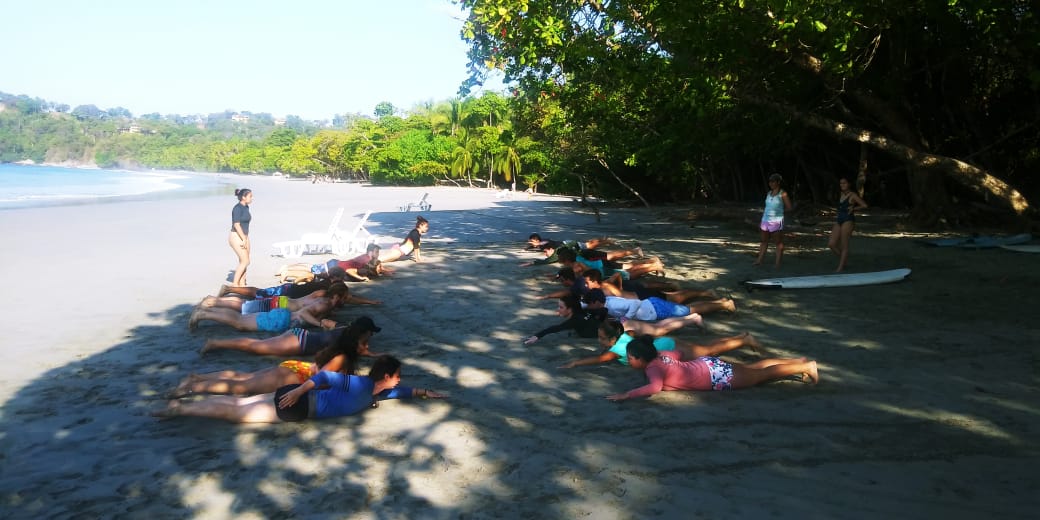Raw adventure. A challenge. An escape from city life. These are the reasons I left my life in Madrid behind to move to Costa Rica.
In early October 2018, I was looking for something that combined my passion for business with my love for the outdoors. At first it seemed like an impossible opportunity to find, but after much extensive searching and research, I was offered a position with Outward Bound Costa Rica (OBCR). This will be my fourth month as the Media & Marketing Manager at OBCR. Time flies when you’re having fun!
At Outward Bound Costa Rica, each new staff member is given the opportunity to experience an 8-day signature hiking course.
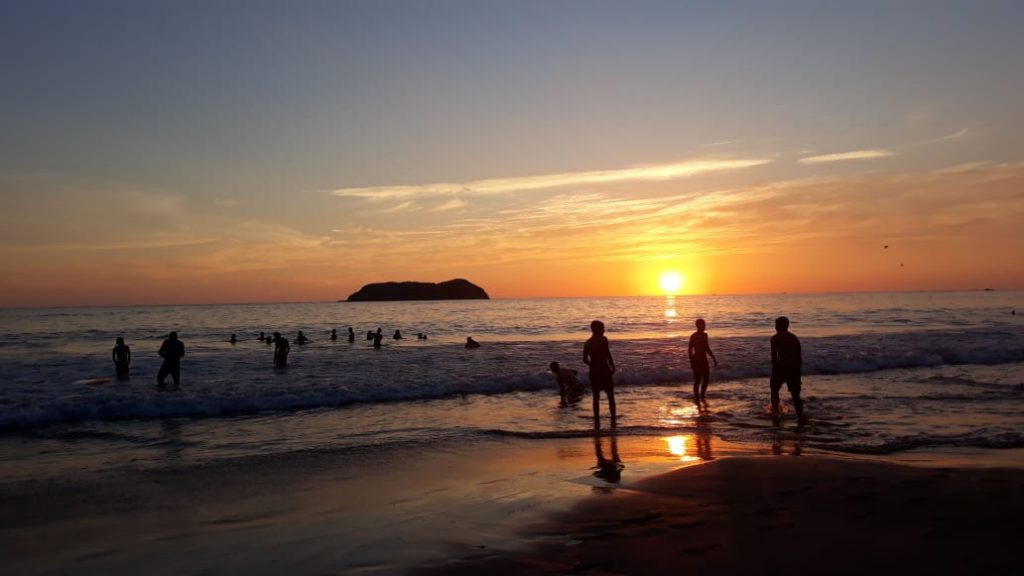
The jewel of the Pacific Coast
My hike took us trekking through the luscious green mountains of Costa Rica. We visited rustic homestays along the way, to gain a better insight into the rural lifestyle. Occasionally we got a glimpse of the coastline far in the distance. We could see what would be, our final destination, Manuel Antonio, the jewel of the Pacific Coast. This view was one of my ‘punto altos’ (high points) on course.
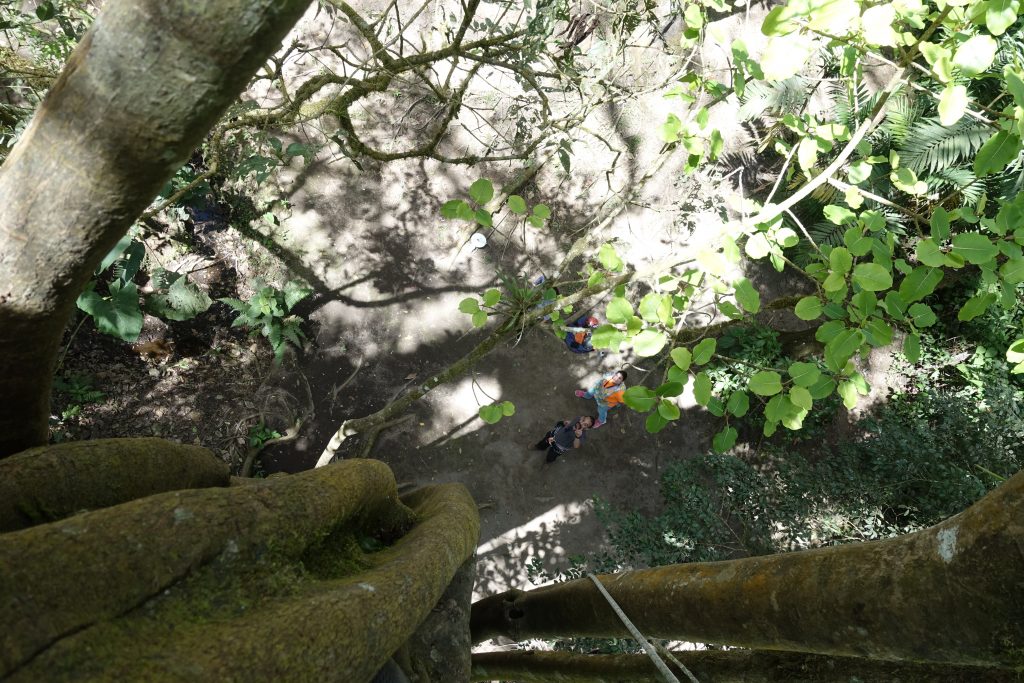
This day really gave me a chance to practice my Spanish and pick up on the Costa Rican slang
We began by meeting 17 Costa Rican students from the European School. The school offers an innovative literature-based educational program and is located in Heredia.
Our first day with the European School consisted of ‘meet and greets’, tree climbing, belaying terminology, dinner, and a ‘duffle shuffle’ (repacking your bag for course) to finish. I introduced myself to a few of them before we headed over to the reserve to begin the first task on our agenda; tree climbing and belaying. We had a system of one person climbing, one person belaying and one person as back-up. We learnt some climbing jargon during the day, the climber called “on belay?” which signalled the belayer to be ready and “belay on” was the response.
This day really gave me a chance to practice my Spanish and pick up on the Costa Rican slang. “Que tuanis!”

It's time to unplug myself from the modern World and enjoy the 'pura vida' lifestyle
4.30AM – My phone alarm blares in my ear telling me it’s time to go. I remove my watch and turn my phone off because I won’t be needing them; the sun and the birds will be my wakeup call for the next week. It’s time to unplug myself from the modern world and enjoy the ‘pura vida’ lifestyle.
We set off and I couldn’t help but look out at the sun rising over the mountains excited for the adventure I was about to embark on.
The road quickly changed into rocky mountain paths and soon after we transferred to a 4×4 more suitable to tackle the rough terrain. We arrived at ‘Rio Naranjo’ in the coffee growing regions of Costa Rica. I devoured a breakfast burritos and enjoyed the best coffee I have ever tasted!
After some well needed stretching, we set off. Everyone established their pace, the two ‘Cacique’s’ (leaders) for that day set some rules. For instance, the students with a more relaxed pace were moved to the front so that everyone could hike together as a group. The first trek was a short and sweet 5K. Around mid afternoon, we arrived at a clearing where we were going to camp. We learned how to set up a ‘tarp tent’ by tying a rope to two trees and then evenly spreading the tarp over the rope and pulling it down, attaching more ropes and weighing them down with rocks. Simple.
A more difficult task was cooking dinner for 21 people with a few pots, pans and gas burners. After squatting over a hot stove for what felt like an eternity (my legs were wobbling), dinner was served. It was surprisingly delicious!
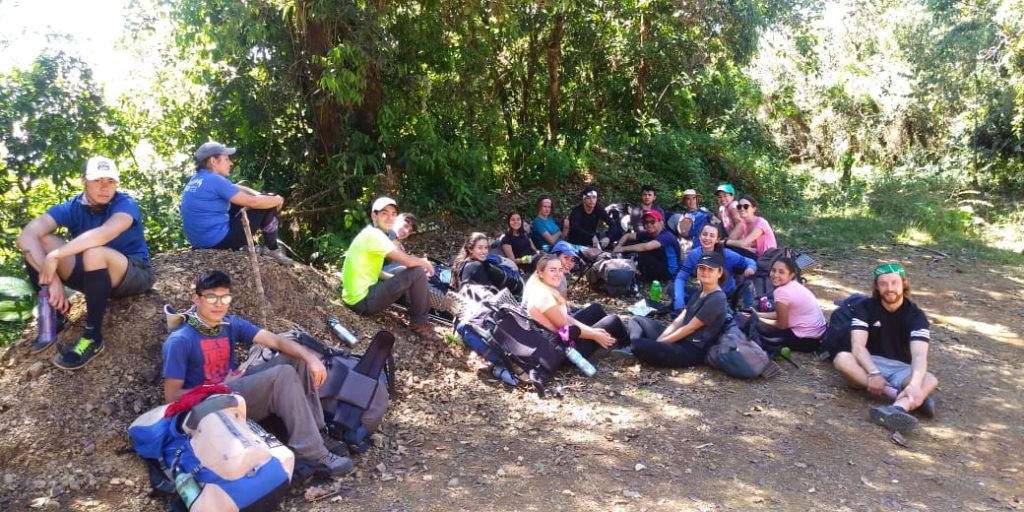
Strapped in to our 80-litre backpacks we hit the road
We rose bright and early the following day because we had much farther to walk. There was a small property directly opposite our camp where we could use their water supply and their outhouse. It had a perfect view of the sunrise over the mountains. Feeling healthy and hydrated, we got strapped in to our 80-litre backpacks and hit the road.
This day was much more challenging for the group compared to the day before. It was more than double the distance and consisted of rolling hills! The terrain was completely different with much more dense jungle compared to the open track the day before. It was a relief in terms of sunlight cover but it meant that we had to walk single file for most of the day.
I was leading the pack along with our instructor, Roger, who excitedly pointed out tapir tracks along the way. To me, they may have looked like pig tracks, but it turns out that they are actually related to horses and rhinoceroses. Who knew!
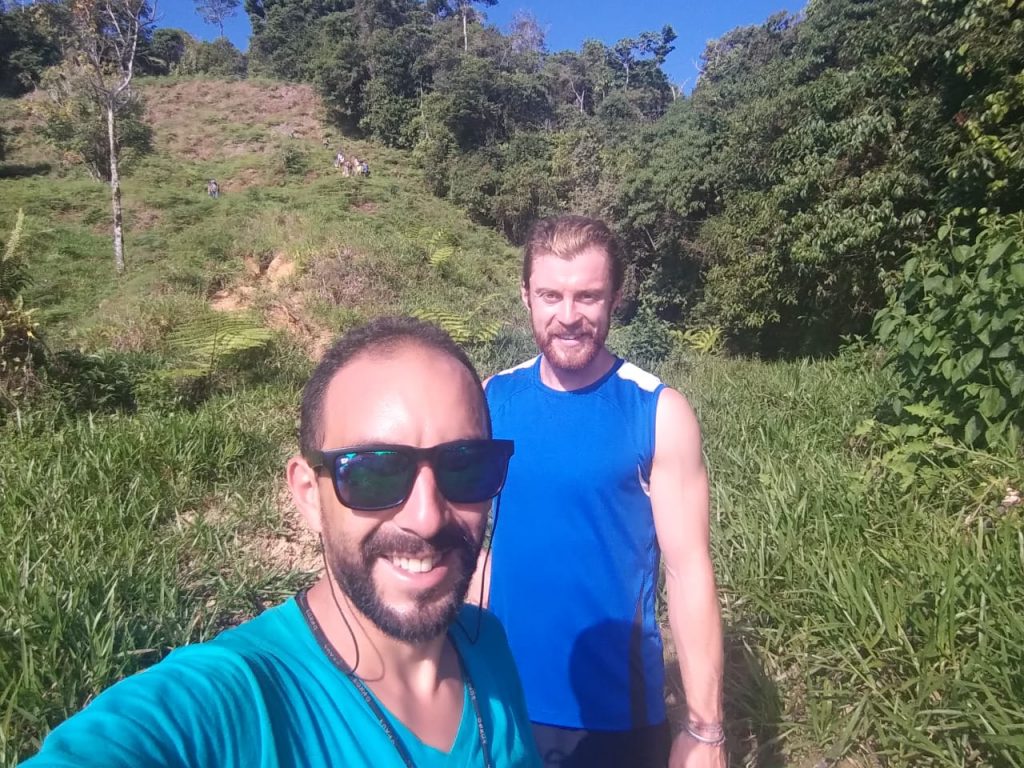
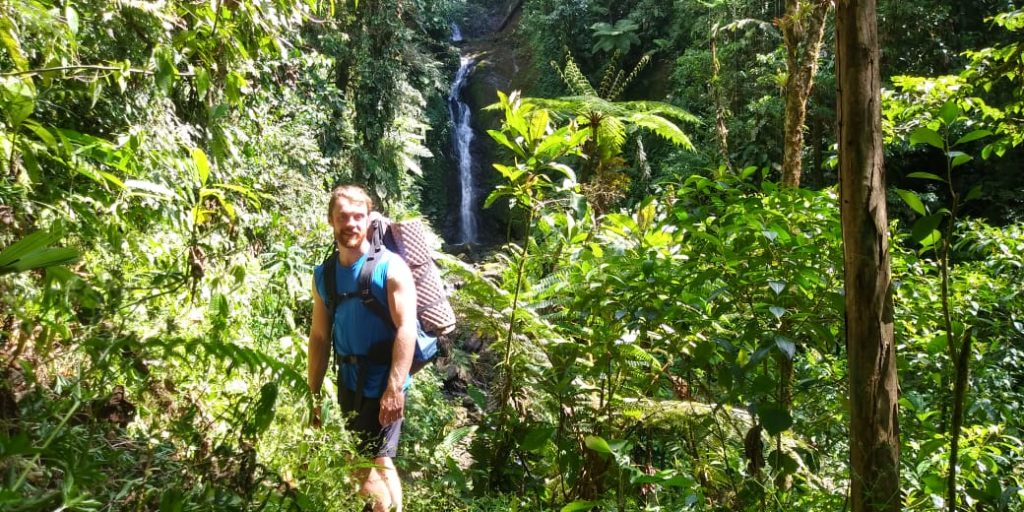
We came together as a group, comforting those that were most affected by it
The next days 5km hike went by in a flash and in no time, we had arrived at our first homestay. Magda’s home was so welcoming. One of my favourite memories from our trip was eating oranges and sitting on the top of the hill by Magda’s home with my fellow course mates talking about life.
We experienced a ‘chicken sacrifice’ at Magda’s house and this was really important for me. I felt that because I am a meat-eater I should see the process and not be blind to what I’m eating and where it comes from. After having this experience, I have really started to appreciate the food on my plate and where it comes from. The process was difficult for some of my course mates but we came together as a group, comforting those that were most affected by it.
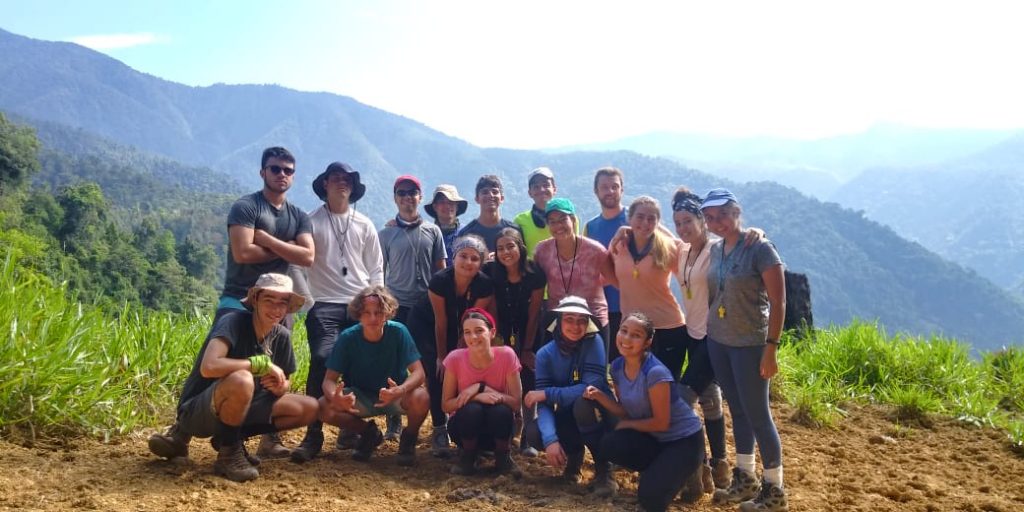
Our thoughts wandered as fireflies buzzed past our heads
That night, there was a solar eclipse. We stood staring up at the sky for hours. Our thoughts wandered as fireflies buzzed past our heads illuminating our surroundings in unison with the shimmering starlight. I could make out the silhouette of a horse in the distance. I couldn’t work out whether it was stood sleeping or merely in a daze not too dissimilar from ourselves.
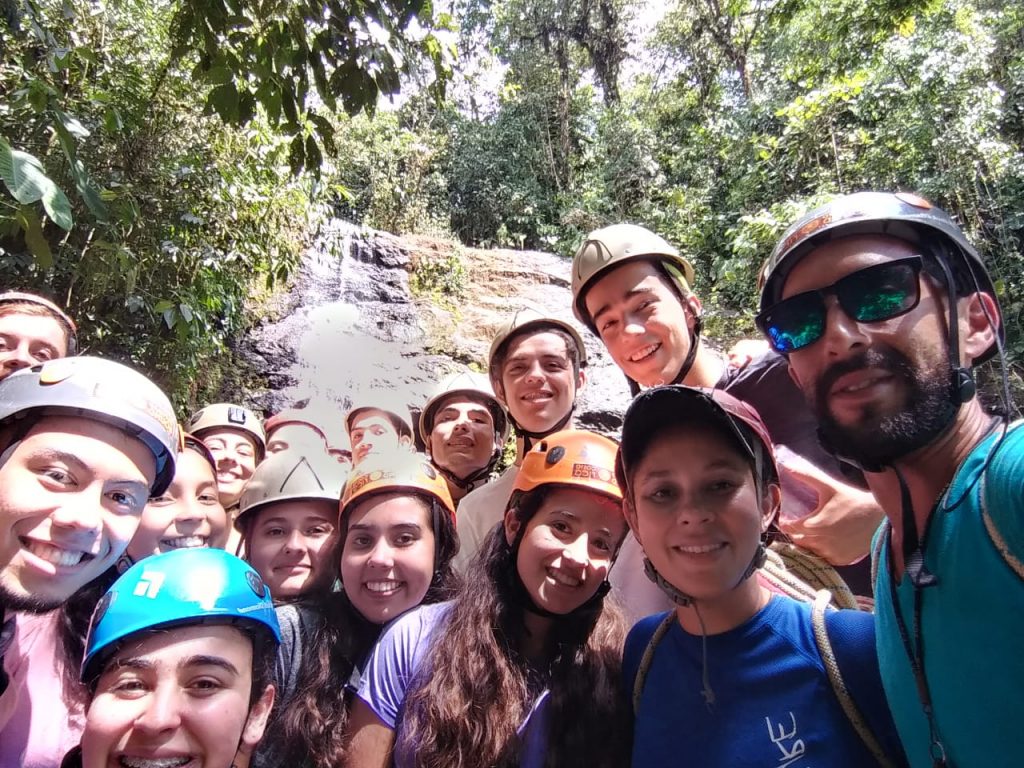
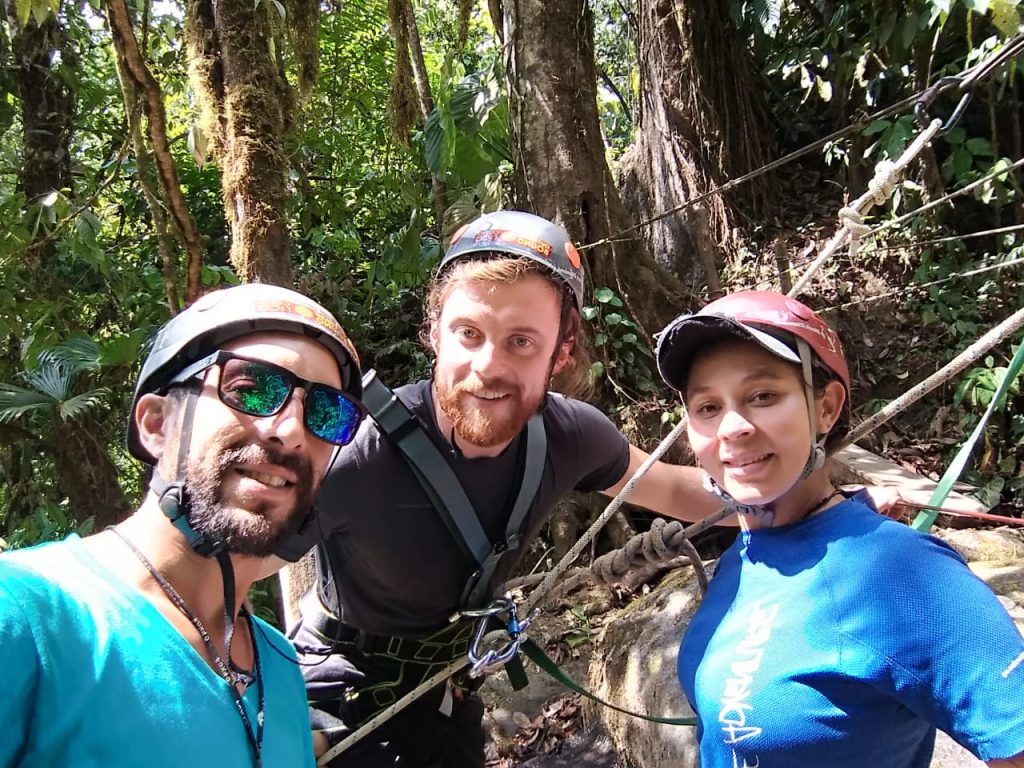
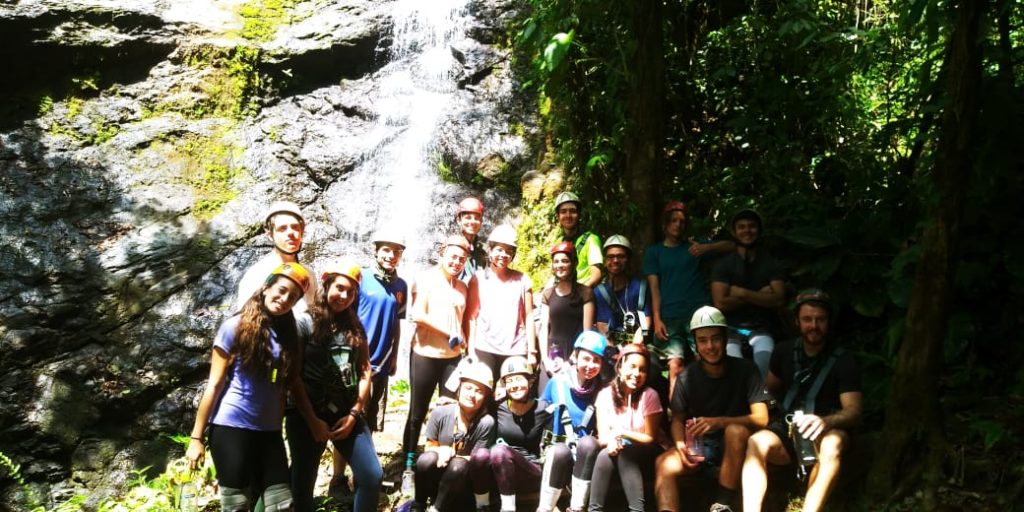
'What better place to conquer your fears than a huge waterfall in the Costa Rican rainforest?'
The next day we rose with butterflies in our stomachs knowing that this was the day of the 80-foot waterfall. I chose to go last and cheered on the rest of my team until it was finally my turn.
I got strapped into my harness and climbed the steep hill to the top. My only fear is of heights so I thought to myself, ‘what better place to conquer your fears than a huge waterfall in the Costa Rican rainforest?’
The view from above was a lot more daunting than from below. I don’t know whether my heart was racing from climbing the hill or because I was about to hang vertically off a cliff. Either way I wasn’t backing down. One of my issues is that I put a lot of pressure on myself to be the best at everything, so my main goal was to rappel this face with confidence and speed.
Roger asked me if I was nervous and my canned response was “no, not at all!” I creeped over the edge of the waterfall cliff, I could see the group below as small as ants. I hastily lowered myself down the slippery rock face and was welcomed with applause at the bottom within what felt like seconds. Job done.
What looked like juicy toffee lay before our eyes
After we had rested at the house for a short while, we made our way to the trapiche to learn how to process sugar. The process can be described in 4 main steps: first, you hit the sugar cane with a mallet on the joints splitting them. Second, you manually feed a grinder to extract the juice (two people have to wind leavers in order for the cane to move through the grinder); very sweaty work. Third, you take the juice and add it to huge metal pans. Fourth, you take the sugar cane leftovers and use it for the fire which heats the juice. He added what looked like a supersized cinnamon stick (it was actually tree bark used to make the impurities rise and then be scooped out). We came back three hours later and what looked like juicy toffee lay before our eyes. Que rico!

As you can see below, things got interesting
I think we may have eaten too much sugar because before long, some of our group broke out dancing!
We returned to the house for a fantastic feast and went to bed with full bellies. And when I say bed, I mean bed. This was the first night that we all had proper beds to sleep in, what luxury!
It was the first time I saw how a pineapple grows
The final homestay we stayed at was Mauren’s parents’ house. There house is located next to the pristine Savegre River, which is considered the ‘cleanest river in Central America’. It was my favourite homestay; partly because I felt much better the day we arrived, but mainly because her family was lovely and they were so giving with their time with us. We had a walking tour of their farm to begin with, it was the first time I saw how a pineapple grows (it blew my mind!). We walked past cocoa trees, tasting the seeds and visited their banana plantation as well.
They were in the early stages of building a new house and we helped move enough cinder blocks to build it! The reward for our hard work was a dip in the crystal clear river to cool down and a quick sunbathe on the protruding rocks. We were shown how to make cheese, and we also made two cakes (one chocolate and one vanilla) which we had for breakfast the next morning before we left for our uphill challenge.
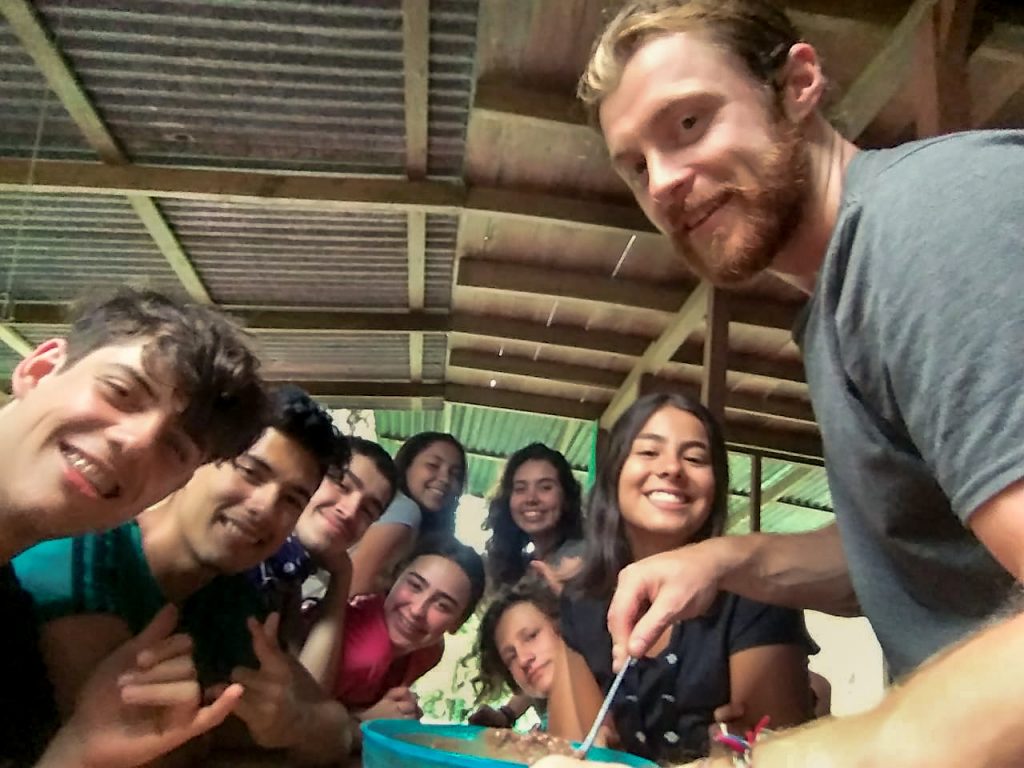
Incline, terrain and steep hills
We were in for another treat the following morning after we had demolished our homemade cakes: incline, terrain and steep hills. It was a hard day’s hike with the sun beaming down on our backs, we were sweating buckets! Luckily everyone was cheerful, singing classic songs and in good spirits.
Ranchos Tinamú (a mountain lodge situated in the community of San Isidro de Dota) was our final stop before the beach house on the last day. This was the place where we had to do our solo.
– Kurt Hahn, the founder of Outward Bound, believed strongly in the benefits of solitary reflection and that regular intervals of solitary silence were key for growth in learning. The idea of Solo was later brought into Outward Bound and changed to a “night alone”. Students would return from Solo with profound insights into themselves, on how they participated not only on the course but in life in general.
For our solo, we had to answer three questions: Where have you come from? Where are you now? Where are you going?
We separated and found little hideaways where we could reflect on our lives and take in the natural surroundings. I scribbled down my thoughts about the journey I had made so far in life and where I thought I was going.
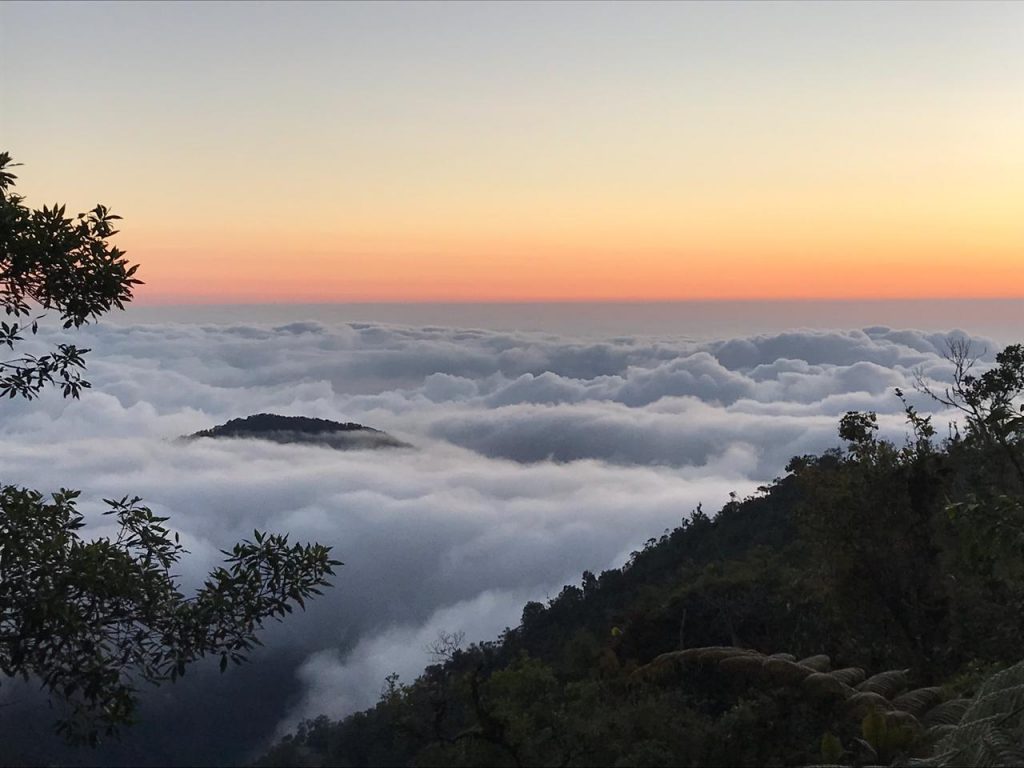
I could see it was an emotional, deeply felt personal reflection
Throughout the course the whole group had spoken in Spanglish, this wasn’t for my benefit, it was just how they communicated. But when each person was telling their story, I realised that they only spoke in Spanish. I could see it was an emotional, deeply felt personal reflection. Everyone opened up much more than I had expected. I had written a 2-page piece about my life but it was nearly dark by the time it was my turn. I couldn’t make out what I had written so I decided to speak from the heart.
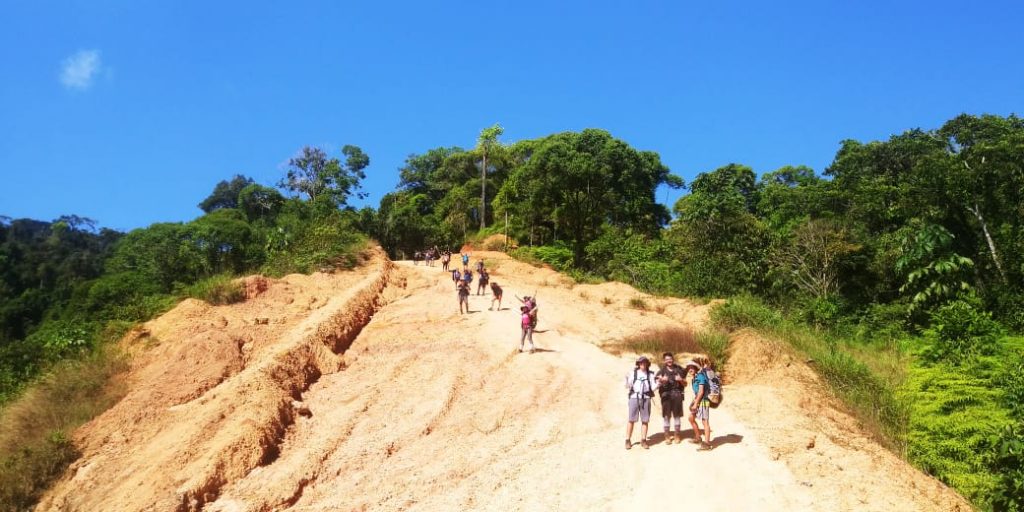
We turned into trackers; seeing if their footprints had left marks in the streams along the way
Ahhh our last day of hiking, only 15km to go! Myself and our three instructors waited behind at our last camp after breakfast for 15 minutes and let the group lead the way on their own. It seemed like they had a new lease on life because their pace was extraordinary. Maybe they had cleared their head the night before, maybe they could see the finish line or maybe they could just smell the ocean.
We set off with a strong pace but didn’t catch up with them; maybe they had gone the wrong way. This was highly unlikely because there were only 2 roads and we had clarified which one to take the day before. We turned into trackers, seeing if their footprints had left marks in the streams along the way, and finally spotted them up ahead. We came together as a group and headed down the final stretch.
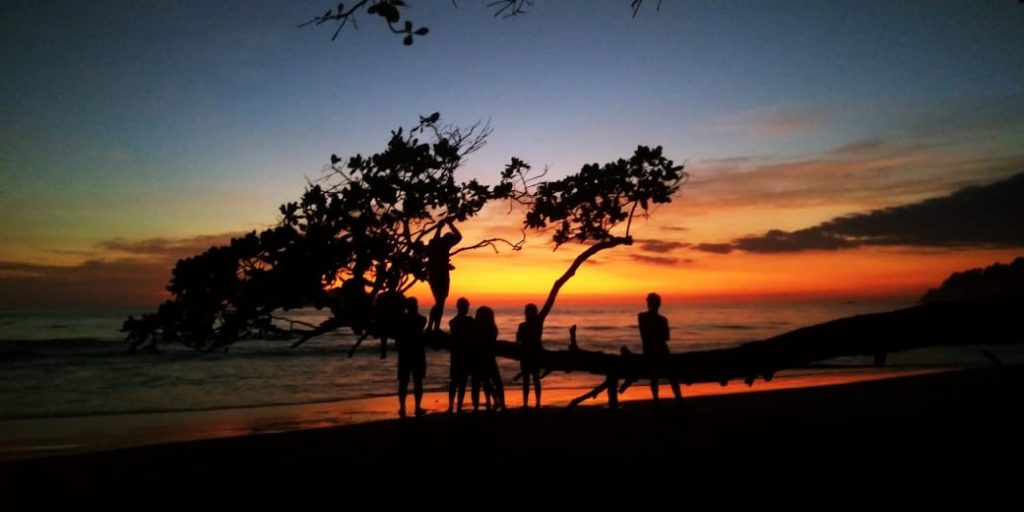
I had been surfing a few times before, but I'd fallen out of love with it
We arrived at the bottom, exhausted and relieved. We had hiked the mountains of Costa Rica and successfully come out the other side in one piece and in good spirits. Two minibuses pulled up shortly after and we headed to the beach; the radio sounded alien to me but also welcoming after a week of being without any technology.
After a quick stop off at the house to drop off our belongings, we headed towards Manuel Antonio Beach to get the last few hours of sunlight, take a quick dip in the warm, welcoming Pacific waters, and play a quick ‘mejenga’. The final evening was spent doing the last ‘chow circle’ (ceremony before dinner) and handing out moon frogs (they stand for transformation) to all the students.
On our final day we headed back to the beach to catch some gnarly waves, or more realistically, learn how to stand up on a surfboard. I had been surfing a few times before, but I’d fallen out of love with it because I hadn’t improved. With some help from our surf instructor Carlos, I was riding out the waves in no time.
One of our hosts had told us that he had not spent any money for longer than he could remember!
This was an unforgettable journey. I would recommend to anyone looking for a break from the technological age that we’re in. You get a chance to unplug from modern reality. One of our hosts had told us that he had not spent any money for longer than he could remember! What a way of life! You get to experience the real Costa Rican culture and learn about the history of the country. You really get to immerse yourself with local communities that have a more traditional approach to life.
